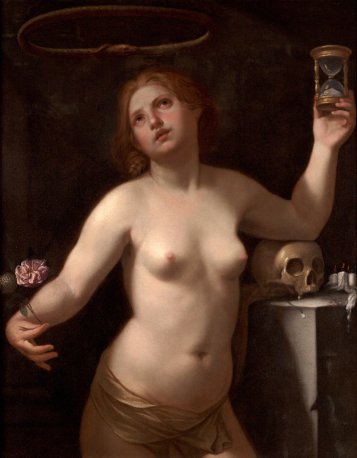Allegory of Life
Egyptosophy
Allegory of Life [ edit ]
In Allegory of Life, Guido Cagnacci has depicted a semi-nude woman surrounded by images of mortality: a rose, a skull, and an hourglass. Her gaze is lifted up to an unusual image in the upper left corner of the canvas--an uroboros, a serpent biting its own tail. Using the uroboros enabled Cagnacci to express mankind's desire for the infinite and immortality with a single simple image. The snake biting its tail represents the eternity denied us in this life and the full potential of the limitless cosmos of the divine. The uroboros in Allegory of Life was almost certainly based on the description of the "hieroglyph" of the snake biting its tail in Horapollon's Hieroglyphica. Cagnacci probably used the popular Italian translation published in Venice in 1547 by Gabriel Giolito de Ferrari.
Period
1601-1663
Dimensions
41 1/2 x 32 7/8 in
Artist or Author
Guido Cagnacci(?)
Provenance
Italy
Material
Oil on canvas
Museum
Crocker Art Museum
Accession Number
1872.133
Credit Line
E. B. Crocker Collections



